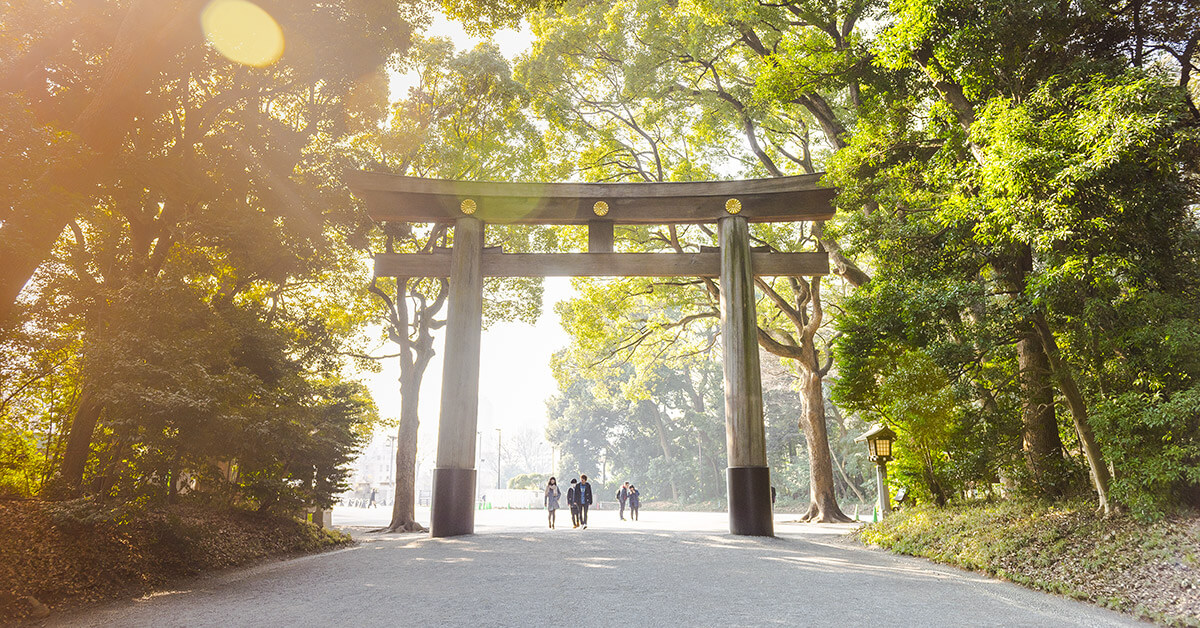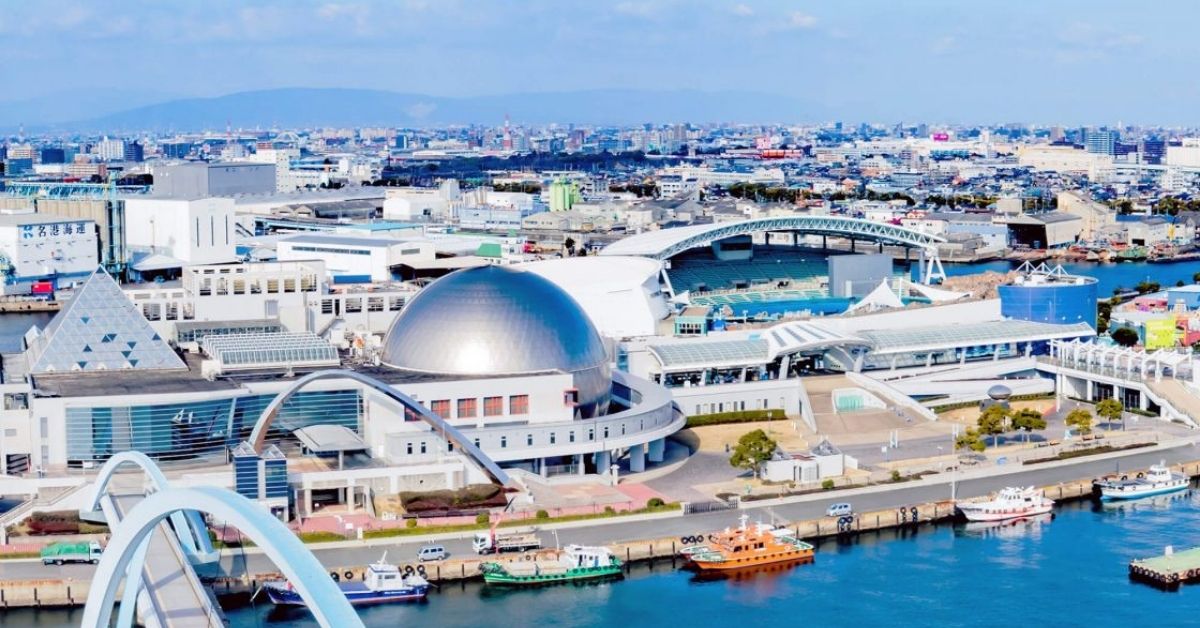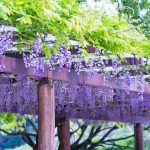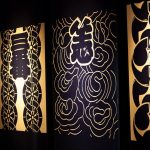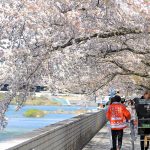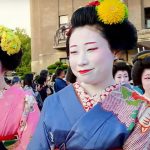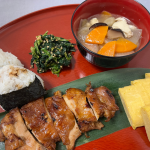Toyokawa, a city located in the east of Aichi Prefecture, is home to one of Japan’s most marvelous shrines: Toyokawa Inari. A must-visit destination when visiting Japan. Toyokawa Inari is considered one of Japan’s Big Three Inari Temples and it is a place worshipped by millions of visitors every year.
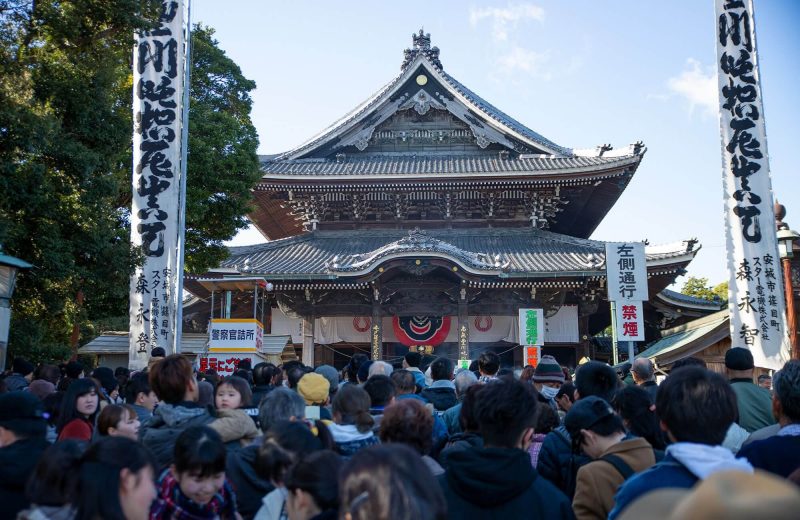
Toyokawa Inari, officially named Enpukuzan Toyokawa Kaku Myôgonji, serves as both a Buddhist and Shinto place of worship. It is dedicated to both the Inari Okami —the fox god— god of fertility, rice and agriculture, industry and worldly success, and to the Buddhist protective deity Dakini Shinten, a deity of happiness and prosperity who averts suffering and brings relief.
Article Contents
A Brief History of Toyokawa Inari
The temple was founded in 1441 by a Buddhist priest by the name of Tokai Gieki, a distant predecessor of the priest Kangan Giin.
The story goes that Kangan Giin (1217-1300), a disciple of Dogen the founder of the Soto Zen sect, had a vision of the deity Dakini Shinten when returning to Japan from his studies in China. In this vision, he saw the deity seated upon a white fox, carrying rice, and bearing a wish-fulfilling jewel in one hand. This deity was reciting a mystical spell: “When this spell is chanted, the faith in me reaches everywhere, and by the true power of the Buddhist precepts, evil and misfortune will be abolished and luck and wisdom attained, suffering removed and comfort achieved, and pain transformed into delight.
This vision moved Kangan deeply, so he carved an image in the form he had seen and worshipped it as a protective deity.
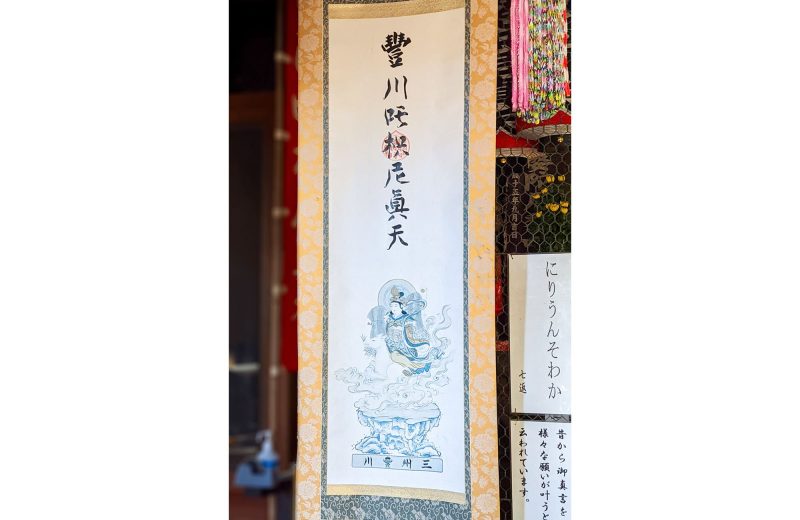
Toyokawa Inari has been a favorite destination of famous warlords and merchants throughout history. There are stories of important Japanese warriors such as Oda Nobunaga (1534-1582), Toyotomi Hideyoshi (1536-1598), Tokugawa Ieyasu (1542-1616), who came to Toyokawa Inari, prayed for victory, and were graced with decisive battles.
Nowadays, many people come to Toyokawa Inari to pray for success and to seek good luck in their business.
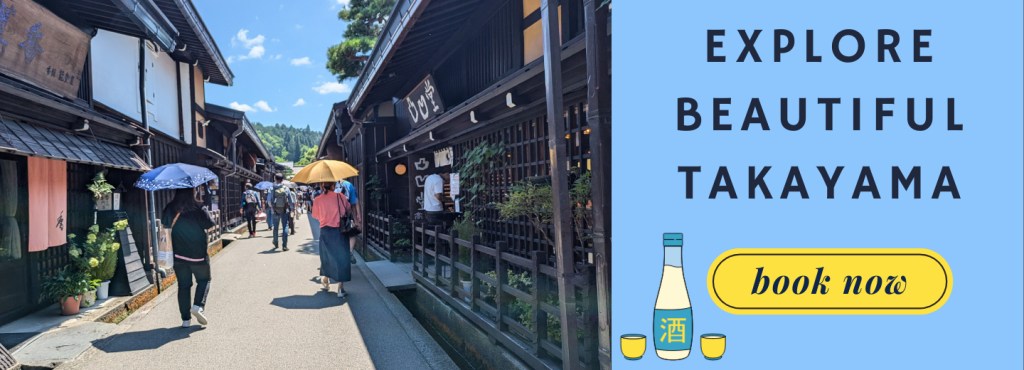
Stroll Around the Grounds
Toyokawa Inari Shrine
Whichever station you arrive at, exit out of the station and go across the humble shopping street called Omotesando Inari Toyokawa. You will stumble upon a large street of local vendors offering delicious local food, and fox/Inari related souvenirs.
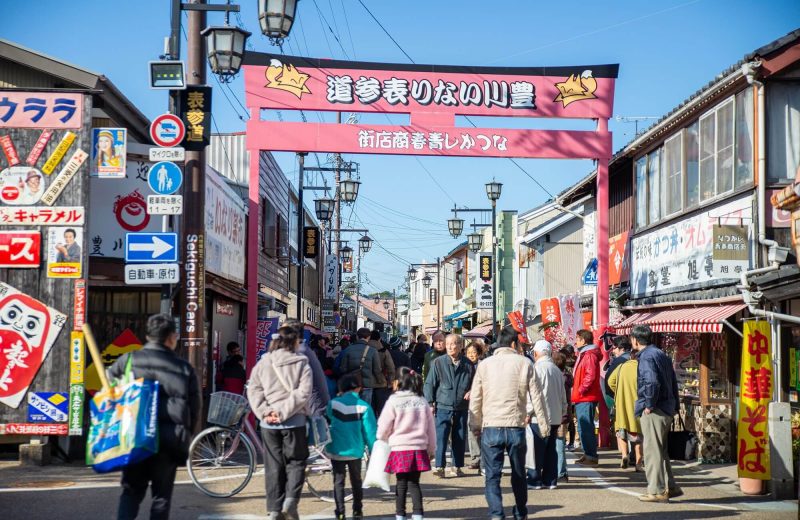
After making your way across the street you will arrive at the entrance of the shrine. The main gate features a huge 4.5-meter-high door crafted from a single slab of wood constructed in 1884. On both sides there are a pair of fierce Buddhist Nio temple guardians protecting the entrance from evil.
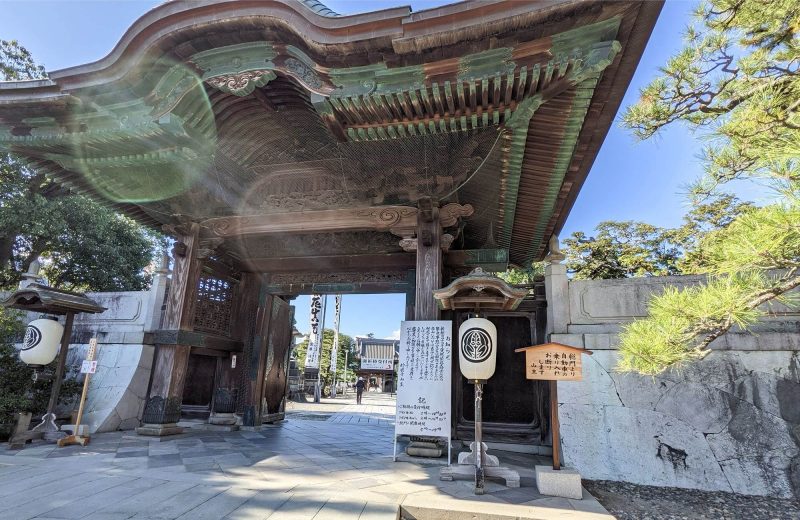
There is no entry fee required for a visit to Toyokawa Inari, but you may want to have a few coins handy to serve as an offering or maybe to buy some Omamori lucky charms.
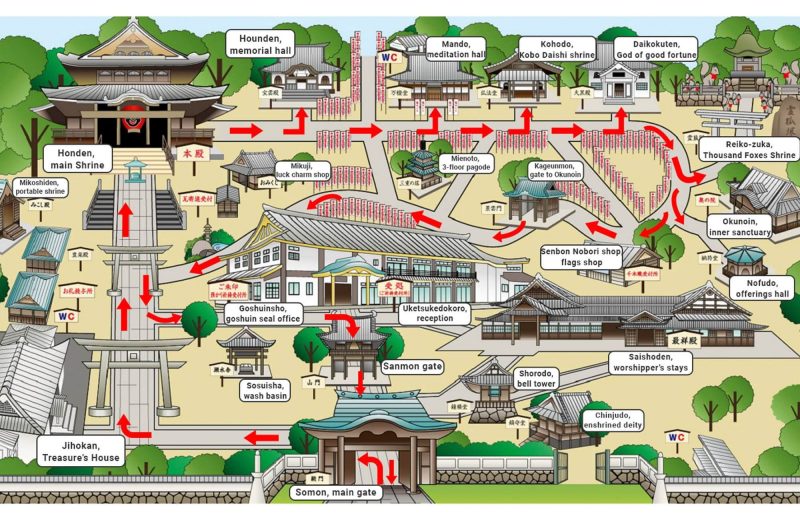
The grounds of the temple comprise about 12.72 hectares and there are around a hundred buildings in all within this temple complex.
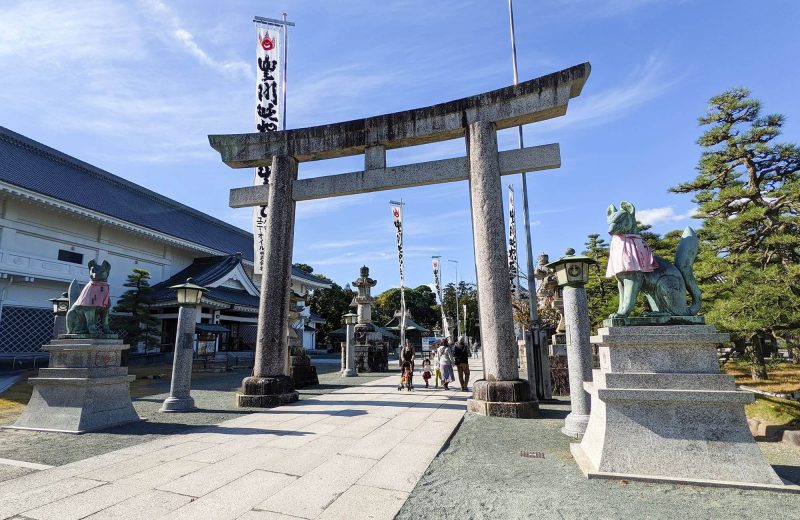
After crossing the threshold of the main gate, you will find the inner gate Sanmon, which dates from 1536, being the oldest existing building in the complex.
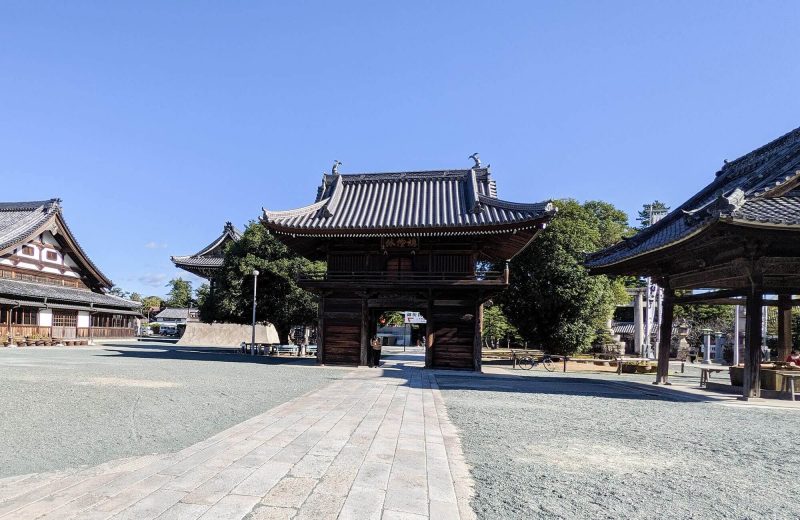
Within the grounds you can find the temple’s Treasure House, which features some important national cultural assets and a number of interesting artifacts including Buddha statues, scrolls and folding screens.
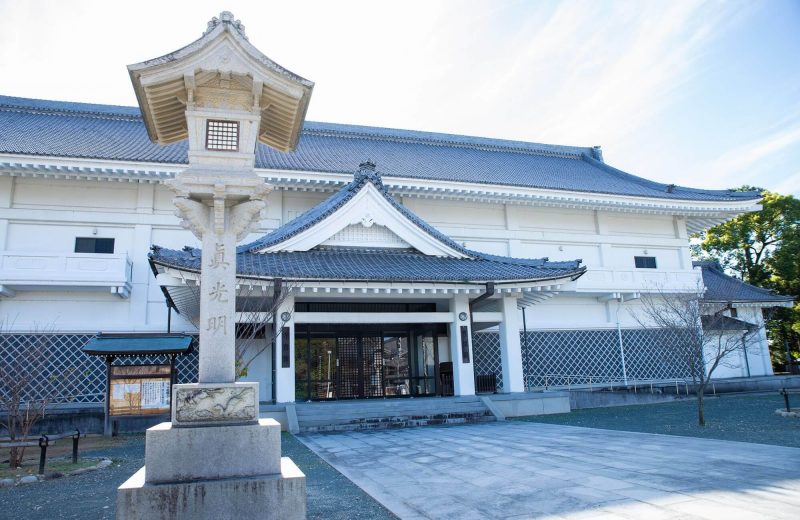
From the Treasure House, head to the main temple, make your offering and follow the path down the steps to the right of the main temple to explore the rest of the grounds.
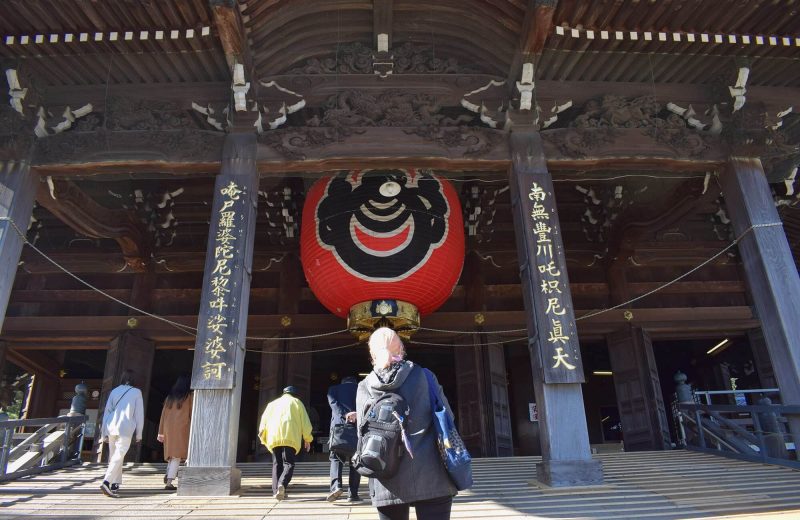
Passing through a winding path lined with flags setup as votive offerings, you will find the Reiko-zuka or “Hill of Foxes” a sacred grove filled with thousands of red-bibbed stone fox statues.
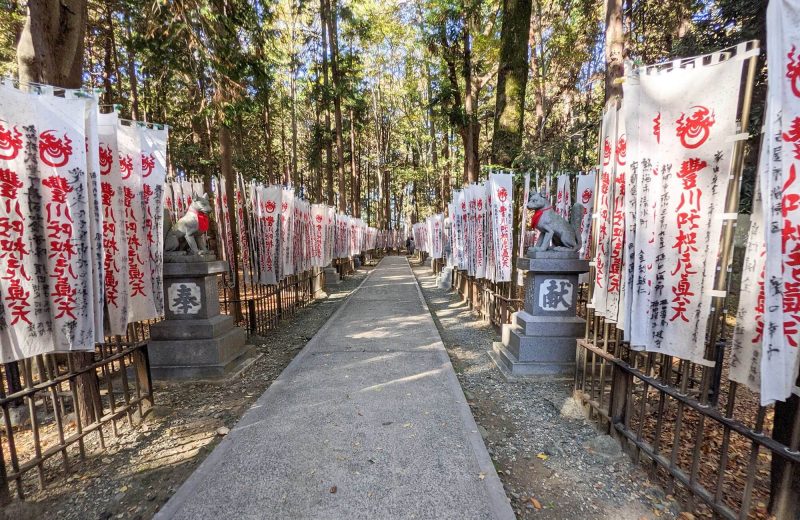
These fox statues are said to be messengers of the deity Inari. Placed throughout the years, by those who had their wishes fulfilled as a symbol of gratitude. This is the main place of interest and the reason most tourists come to visit Toyokawa Inari to take pictures of the hundreds of fox statues.
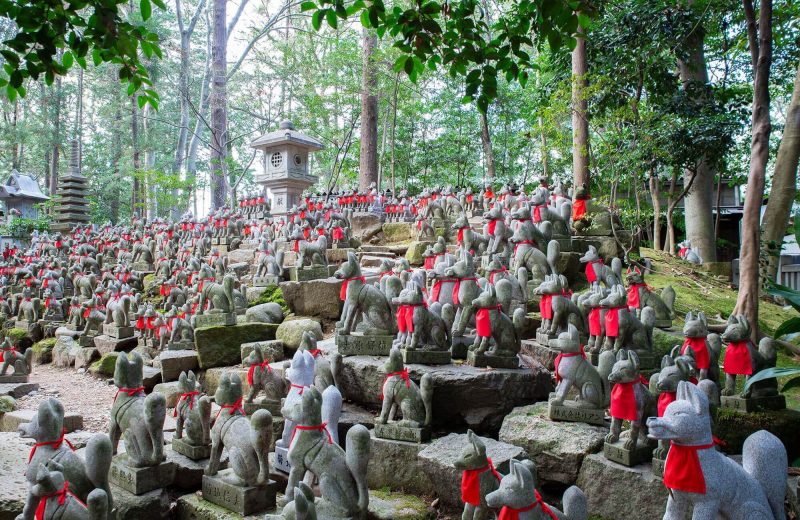
After that, continue exploring other sites such as the sacred pavilion Okunoin, the three-level pagode and the stunning Koi fish pond.
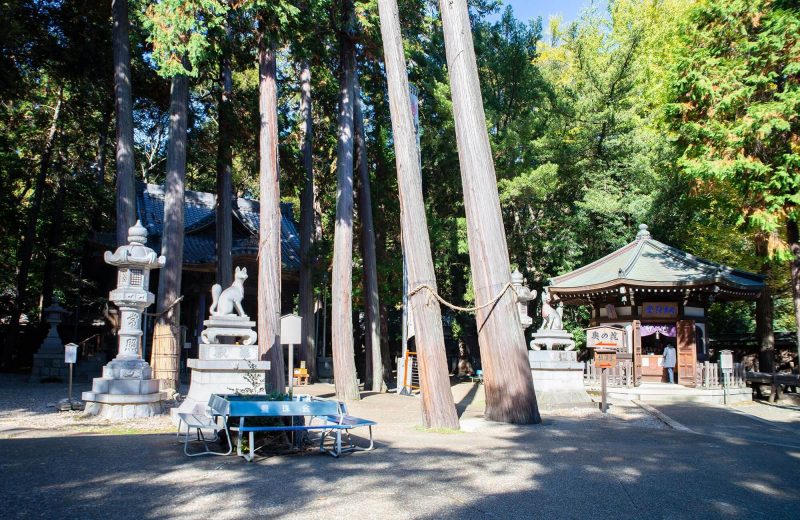
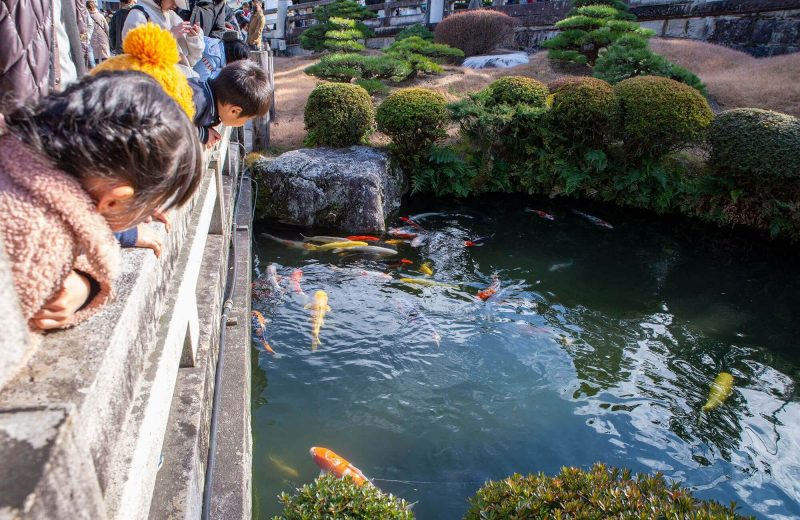
How to Get to Toyokawa Inari Shrine
Toyokawa Inari Shrine (豊川稲荷)
Entry Fee: free
Opening hours: 9:00-17:00
Address: 1 Toyokawacho, Toyokawa, Aichi 442-0033
Website | Google Maps
Savor the Local Delicacies
After strolling the grounds of Toyokawa Inari, you will probably crave something to eat. So, take a break and savor the local treats, such as Inari Sushi—sweetened fried tofu pouches filled with Sushi rice.
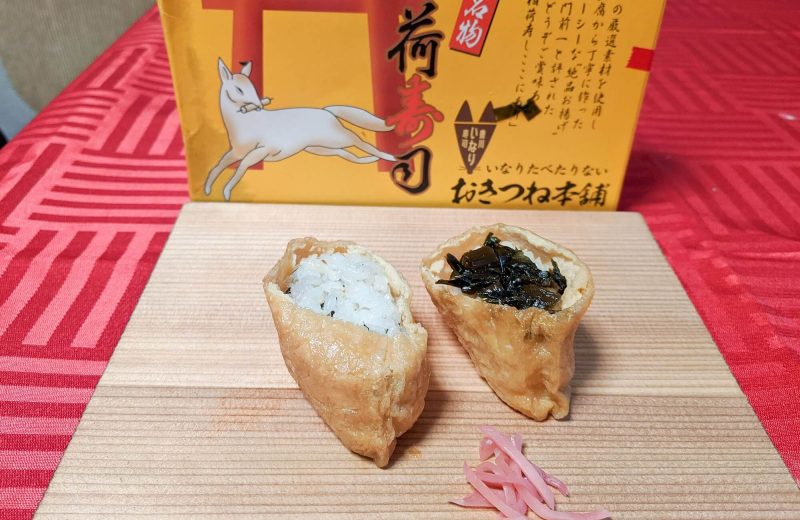
Its exact origins are unknown, but it is said that Inari Sushi was first introduced in Japan during the Edo Period in the late 18th century. People of that time made Sushi by stuffing rice in the deep-fried tofu as offering to the deity Inari.
One of our restaurant recommendations of the area is Musubichaya (むすび茶屋) just about 3-minute walk from Toyokawa Inari.
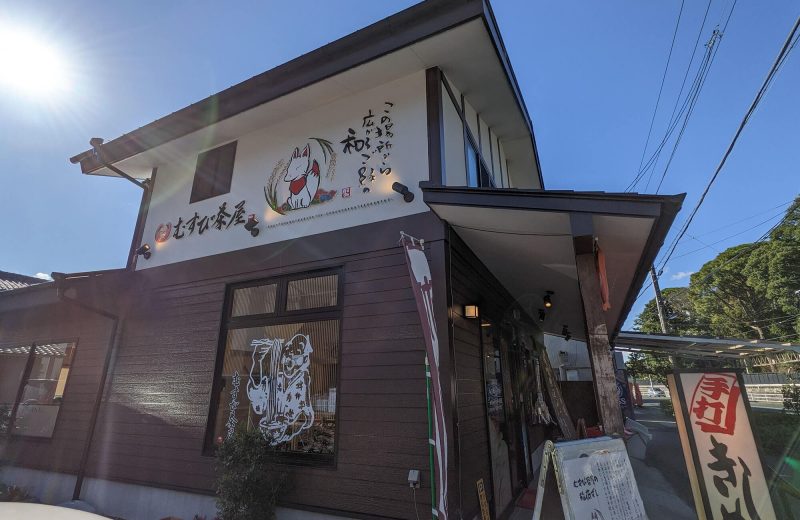
This shop has come up with its own creative twist on Inari Sushi. The tofu once deep-fried is left hanging for one day to remove most of the oil fat and the rice is marinated with Sushi vinegar, sesame, and aromatic Oba leaves (green perilla).
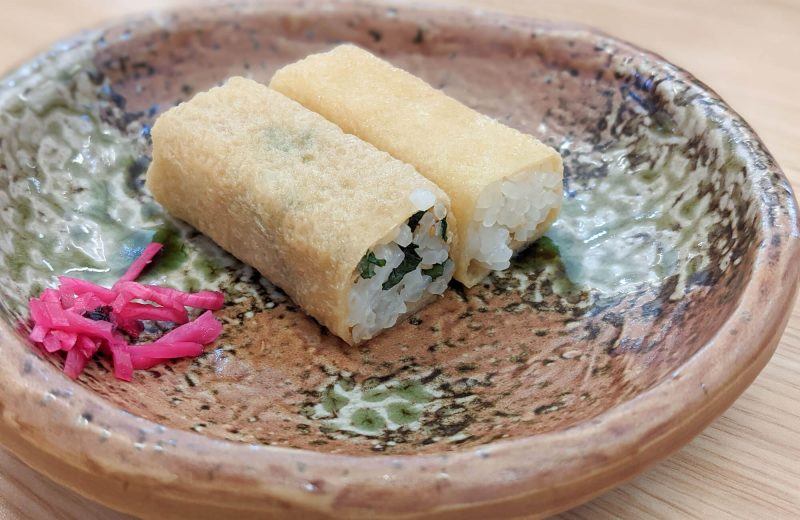
The Inari Sushi is served with Kishimen, flat noodles that are served with a cold Bonito broth or hot in a vegetable broth.
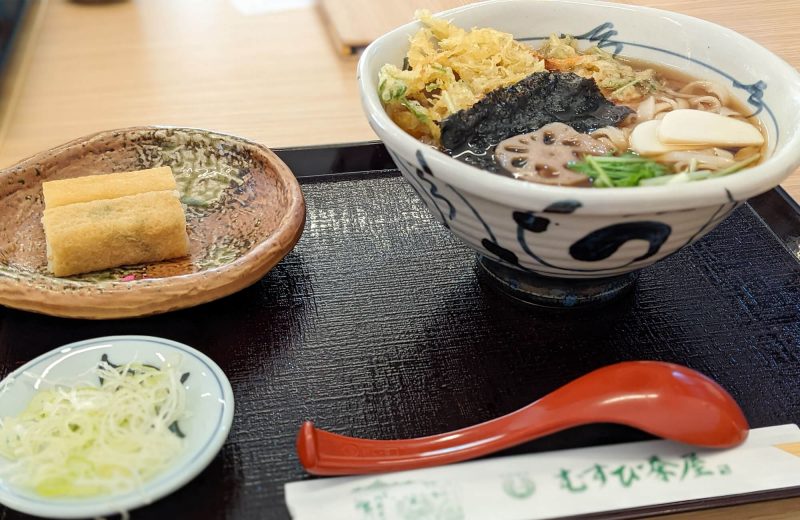
Another delicious regional dish you can try is Miso Nikomi Kishimen (a flat noodle dish served in a piping hot red Miso based soup).
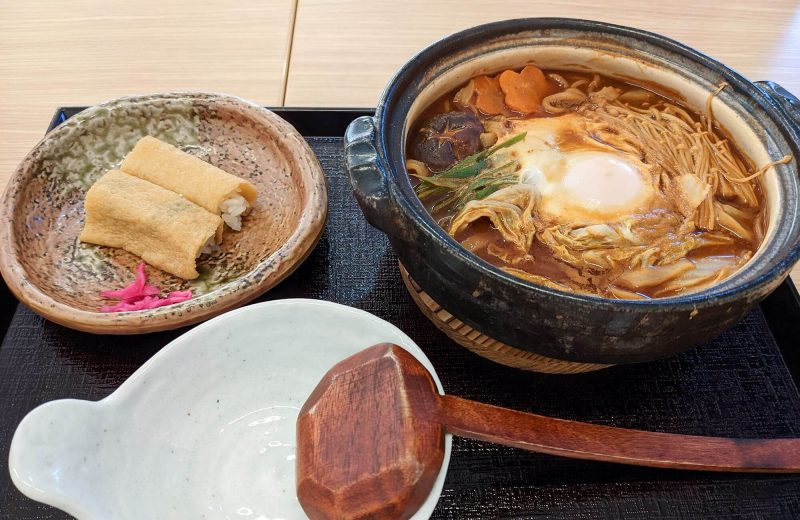
How to get to Musubichaya
Musubichaya (むすび茶屋)
Opening hours: 10:00-17:00, closed on Thursdays
Address: 27 Saiwaicho, Toyokawa, Aichi 442-0046
Website (Japanese only) | Google Maps
Paint Your Own Japanese Fox Mask
Foxes are special creatures in Japanese culture, appearing as protectors with the power to ward off evil spirits. Inspired by the Noh theater, fox masks are worn to pay tribute to gods during many Shinto festivals.
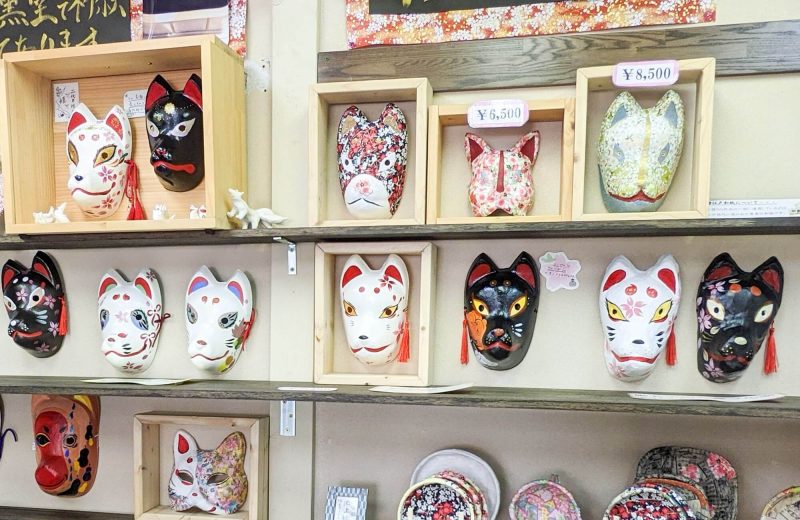
There is a small shop called Shiki Gitsune that specializes in fox masks and offers a hands-on fox mask painting experience that will enrich your trip by creating lovely handmade souvenir to take home and it will be a fun experience to remember.
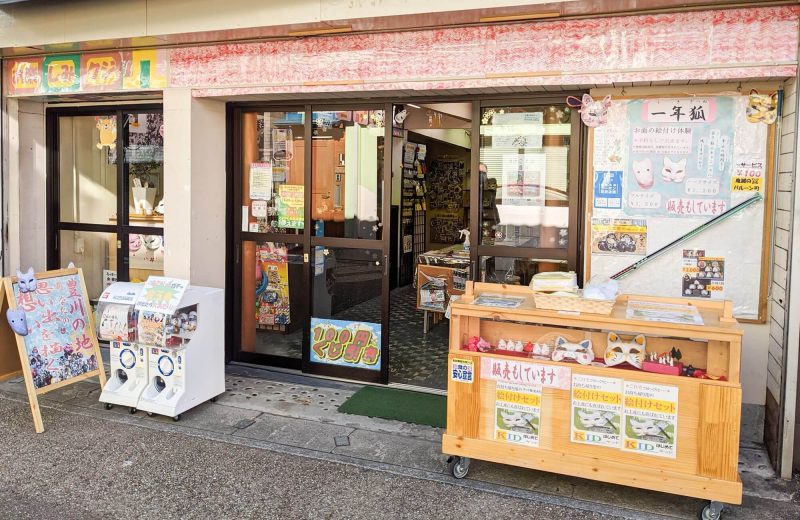
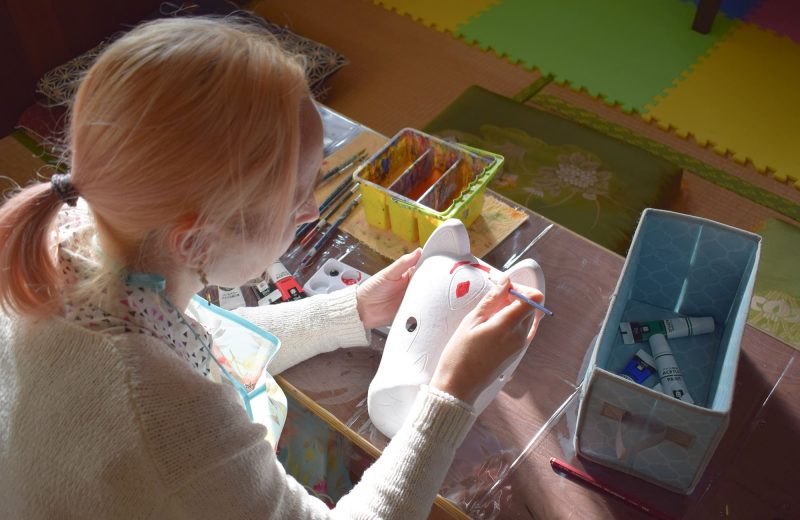
How to Make a Fox Mask
The steps are super easy:
1. Choose the size of the mask: either half size or full-sized.
2. Think about the design: you will have many samples to copy or if you feel inspired, you can paint your own and unique design.
3. Practice with brushes: even if you are not very familiar with brushes you can practice a little with the different brushes you will use.
4. Draft your design: use a pencil to draw the design on the mask
5. Paint on the mask: use acrylic paints to bring your design to live on the mask but be careful not to stain yourself with the acrylic paints.
6. Let the paint dry: This will take just a few minutes and you will be able to take the mask with you right away.
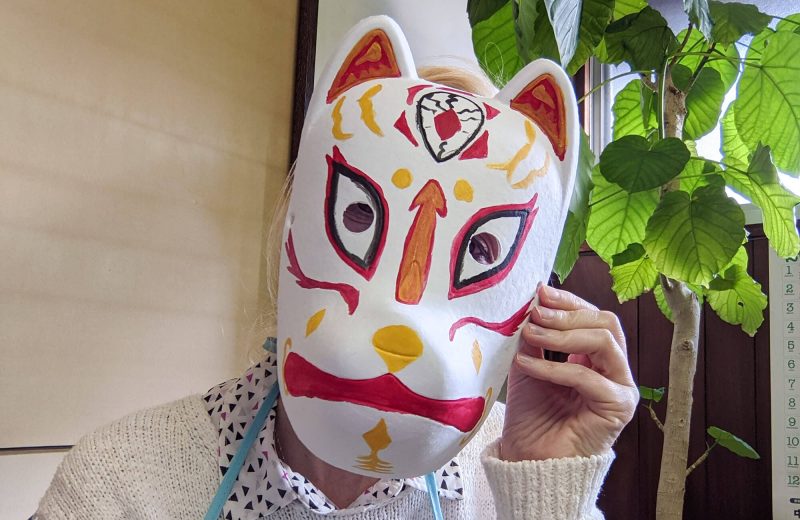
This experience will take from 30 minutes to one hour. But depending on how detailed you want to paint the mask you will probably need a little more time. The experience costs around 1,200 yen for the half size mask, and 1,800 yen for the full-sized mask. You don’t need to prepare anything in advance since the shop will provide everything you need. After the experience take a look at the many fox related goods and figures that are exhibited in the shop and maybe buy something special.
How to Get to Shikigitsune
Shikigitsune (一年狐 (しきぎつね))
Cost: ¥1200-¥1800
Opening hours: Weekdays 11:00-15:00, Weekends and holidays 10:00-16:00. Closed Wednesday and Thursday
Address: 25 Monzencho, Toyokawa City, Aichi Prefecture
Website (Japanese only) | Google Maps
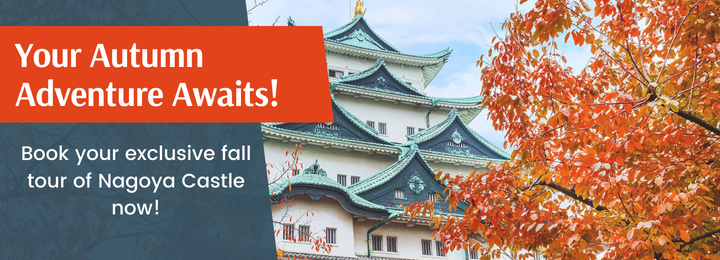
Get to Know the Major Toyokawa Festivals
Toyokawa has many amazing festivals all year round, so if you are lucky there might be one going on during your visit. These are the major festivals held annually in Toyokawa.
Toga Jinja Shrine Annual Festival
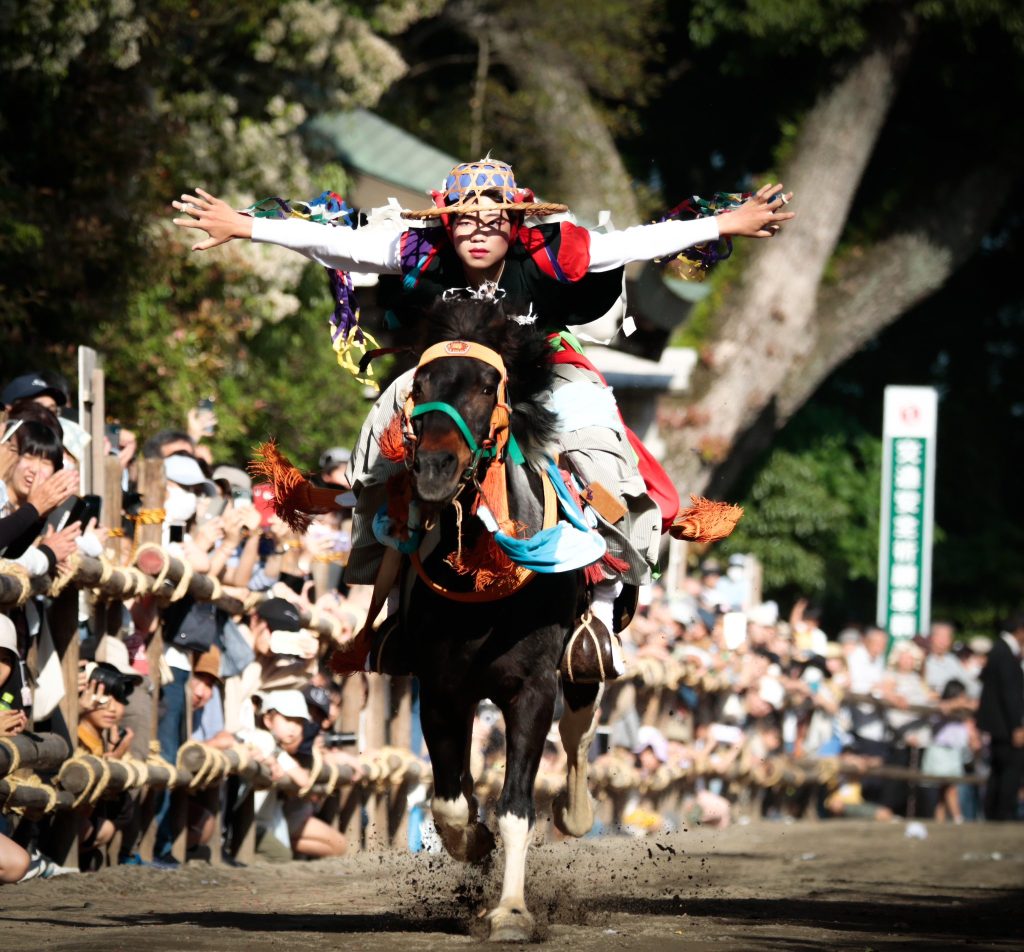
One of the most exciting festivals is held during the Golden Week National Holiday at the Toga Shrine. Here, you can watch young men compete in Yabusame, an event where children ages 10-15 ride horses at high speeds with no hands, or shoot arrows from horseback.
Toga Shrine Festival (砥鹿神社)
Date: May 3rd, 4th, and 5th
Address: Nishigakiuchi-2 Ichinomiya, Toyokawa, Aichi 441-1231
Website | Google Maps
Toyokawa Inari Great Spring Festival
Parade of kids dressed in traditional clothes and a Mikoshi (small shrine) parade.
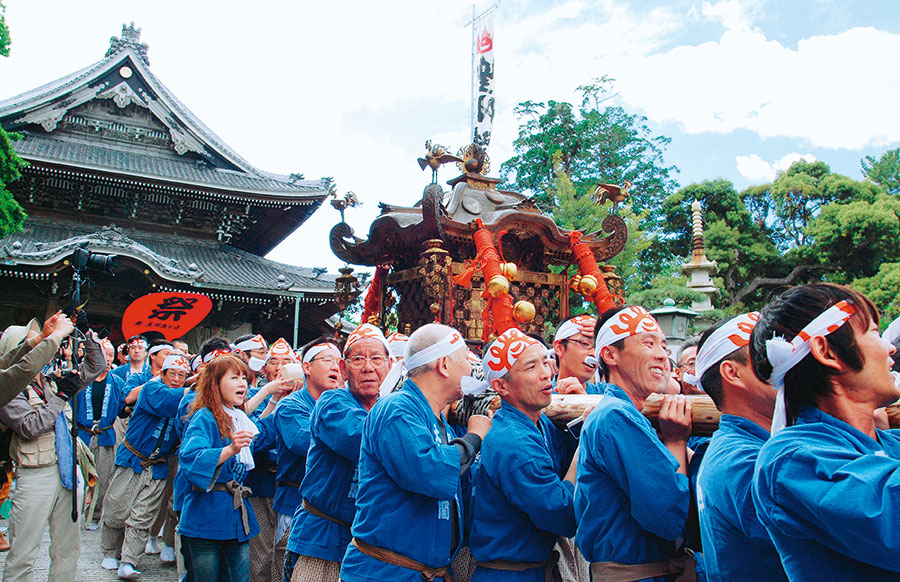
This festival is held every May during the Golden Week holiday period. Participants carry around a small shrine (Mikoshi) around the temple grounds. You can also see children dressed up in traditional attire. Tomikuji, the lottery that was popular during the Edo period, is also available during these dates.
Toyokawa Inari Great Spring Festival(豊川稲荷春季大祭)
Date: March 4th and 5th
Address: 1 Toyokawa-cho, Toyokawa-shi, Aichi, 442-8538
Website | Google Maps
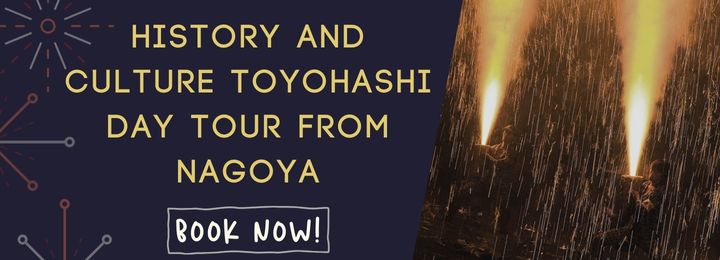
Toyokawa Civic Festival Oiden Sai
A Yosakoi festival, japanese folk dance, where thousands of dancers are performing on different stages around the city.
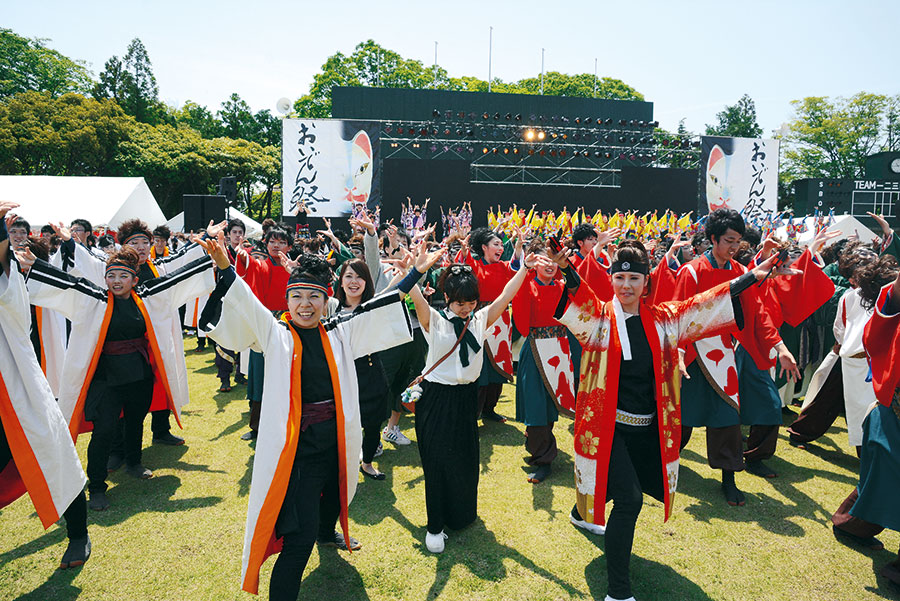
This festival is not religious in origin. In fact, this is more like a public concert or celebration put on by the city of Toyokawa for its citizens. During this festival, you can witness many different kinds of dance and stage performances. Attendees can also shop for local goods such as crafts and artisan foods.
Toyokawa Civic Festival Oiden Sai
Date: 4th Weekend of May
Address: Various locations all over the city
Website
Toyokawa Summer Festival
A festival going back over 400 years! An amazing display of amazing fireworks such as Tezutsu hand-held fireworks, Ozutsu giant cannon fireworks, floats and portable shrines parade and traditional dances.
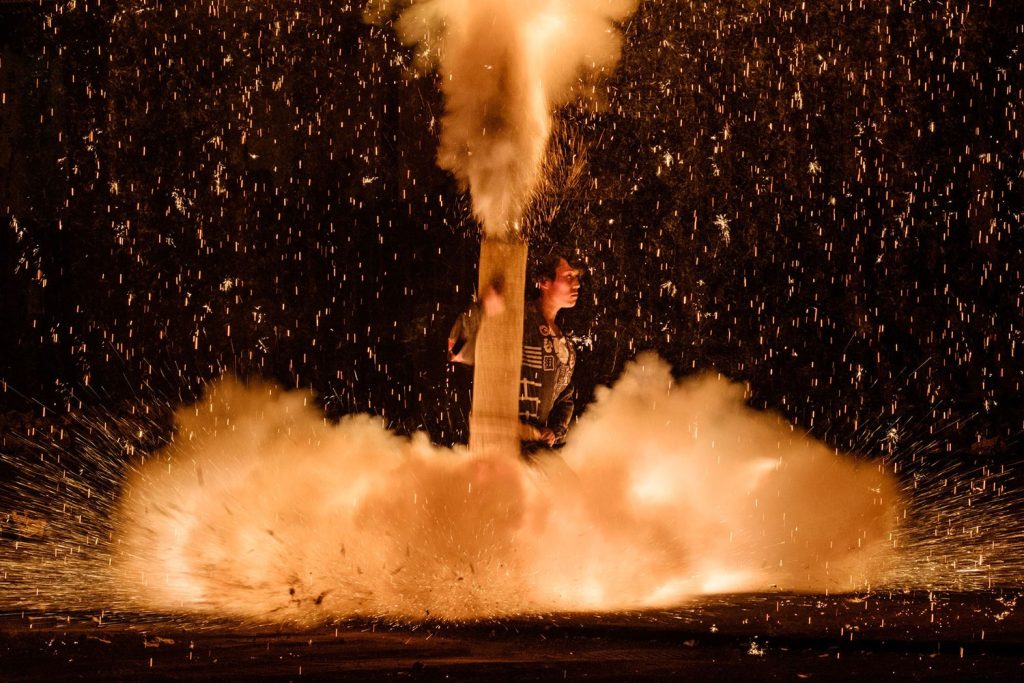
One of the most exhilarating festivals, the Summer Festival is when you can witness many different kinds of pyrotechnic displays, including handheld fireworks shooting out of cannons (Tezutsu hanabi) and Tsunabi rope fireworks. Every year, shrine members make their own Tezutu cannons from bamboo, straw ropes, gunpowder and metal powder. During the festival, members take turns displaying their Tezutsu Hanabi fireworks. There are also shrine processions and dancing!
Toyokawa Summer Festival at Susano Shrine (進雄神社)
Date: Mid-July, exact dates vary
Address: 134 Toyokawa Nishimachi, Toyokawa, Aichi 442-0031
Website | Google Maps
Ko Summer Festival
A Kabuki parade with a procession floats and fireworks display.
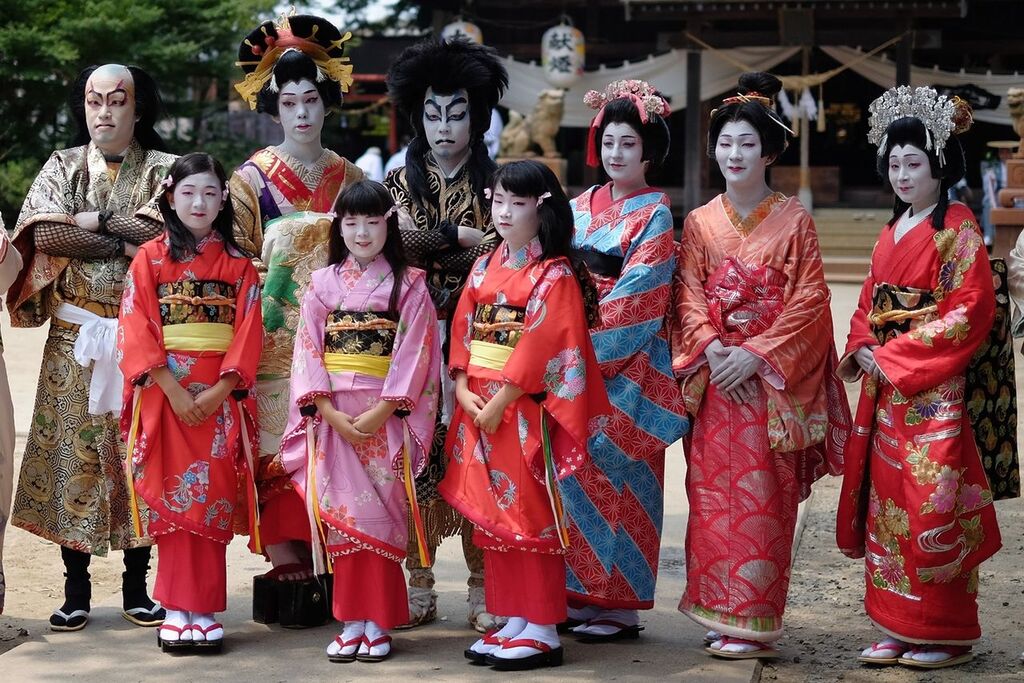
This festival takes place over the course of three days, with the main event being the Kabuki parade that starts at the Oyashiro shrine and proceeds throughout the suburb of Ko. Costumes feature warrior monks, bandits, and beautiful courtesans dressed in fine costumes and makeup. Following the parade, you can browse the Yatai (street vendor) stalls set up all over town and watch the amazing fireworks displays until late in the evening.
Ko Summer Festival at Oyashiro Shrine (国府夏まつり)
Date: Late July, exact date varies
Address: 5 Ryuka, Ko-cho, Toyokawa-shi, Aichi, 442-0854
Website | Google Maps
Toyokawa “Tezutsu Hanabi” Citizen’s Festival
Tezutsu Hanabi translates to “arm-holdling fireworks.” Like the summer festival, you will be able to witness these daring displays of pyrotechnics at this citizen’s festival.
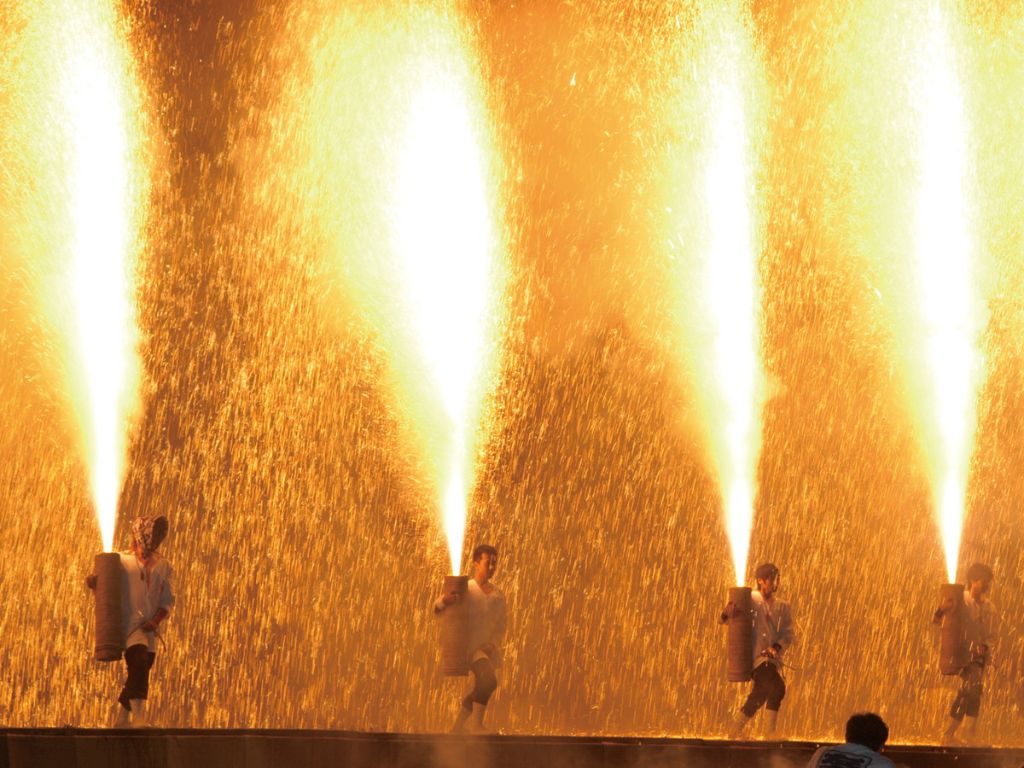
This festival is one of the biggest events in Toyokawa featuring the amazing Tezutsu hand-held fireworks with more than 400 years of history. These festivals are held by locals for the benefit of the citizens. At this festival, groups belonging to various local shrines will showcase their traditional cannon-making techniques and showmanship.
Toyokawa Citizen’s Festival (豊川手筒まつり )
Date: Late August
Address: Toyokawa Athletic Stadium, 1 Chome−80−80, Suwacho, Toyokawa, Aichi, 442-0068
Website | Google Maps
Toyokawa Inari Chinza Great Autumn Festival
A fall festival where giant lanterns are displayed, traditional parades with small portable shrines procession.
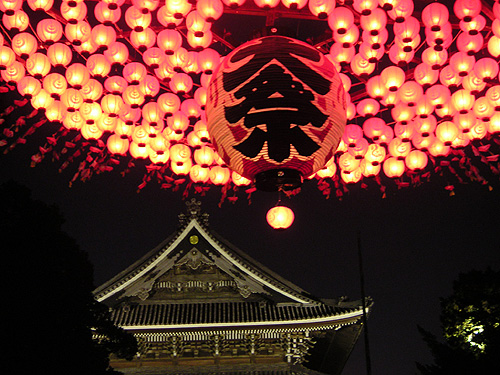
This festival has its roots as a harvest festival, where citizens would gather to give thanks for the bountiful harvests of the fall. At this festival, you can watch a parade of portable shrines carried around the Toyokawa Inari grounds, as well as a parade of local children dressed in ornate costumes. The centerpiece of this festival is an enormous paper lantern raised above the shrine grounds. This festival lasts two days in late November, and during the daytime on both days, you can attend an antiques festival held on the shrine grounds.
Toyokawa Inari Great Autumn Festival (豊川稲荷秋季大祭)
Date: Late November
Address: Toyokawa Inari Shrine, 1 Toyokawa-cho, Toyokawa-shi, Aichi
Website | Google Maps
Savoring Local Flavors: Where to Eat
Toyokawa is known for its eel, but as someone who lived there for three years, Toyokawa is also home to a ramen restaurant you don’t want to miss.
Tonkotsu Ramen at Hayataro
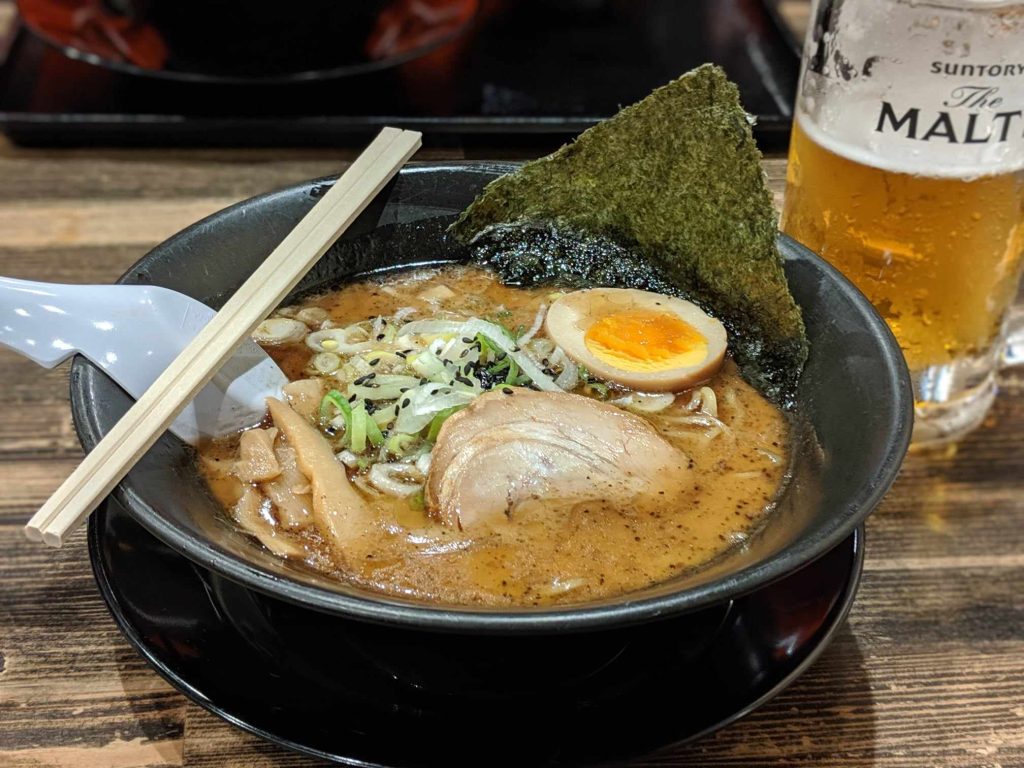
Hayataro is one of the most uniquely delicious ramen shops we’ve visited. The broth is garlicky, savory, and rich, simmered for over 10 hours to create peak “umami” flavor. This is no regular ramen, and if you are in Toyokawa, it’s definitely worth going out of your way for.
Hayataro (麺屋はやたろう 豊川店)
Opening hours: Lunch 11:00-14:00, Dinner 17:00-22:00
Address: 2 Chome-19-1 Chitosedori, Toyokawa, Aichi 442-0888
Access: From Inariguchi Station, it’s an 8-minute walk.
Website | Google Maps
Eel at Shouraku
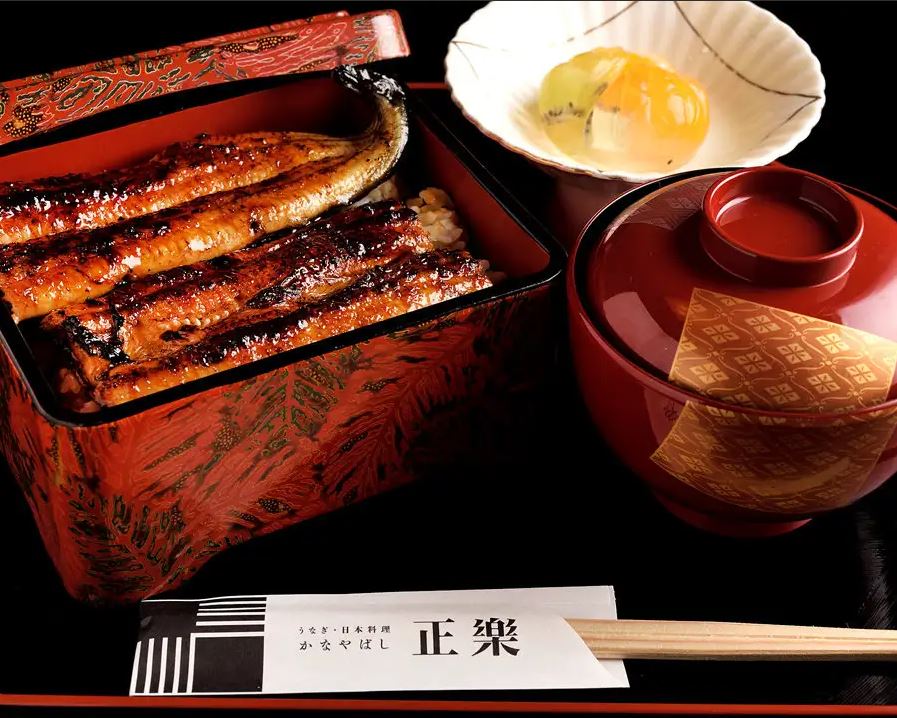
Shouraku is a Hitsumabushi restaurant which has been standing in Toyokawa for over 60 years. That’s three generations of perfecting how to cook this fantastic dish. This shop specializes in cooking Toyohashi eel, which is raised in the next town over. This is one of the best and freshest places you can visit for Hitsumabushi. For more places you can eat eel closer to Nagoya, click here.
Shouraku (正楽)
Opening hours: Lunch 11:00-14:40, Dinner 17:00-20:00
Address: 268-3 Hachimancho Yanagimachi, Gujo, Gifu 501-4214
Website (Japanese only) | Google Maps
Tempura Sets at Hakuyoan
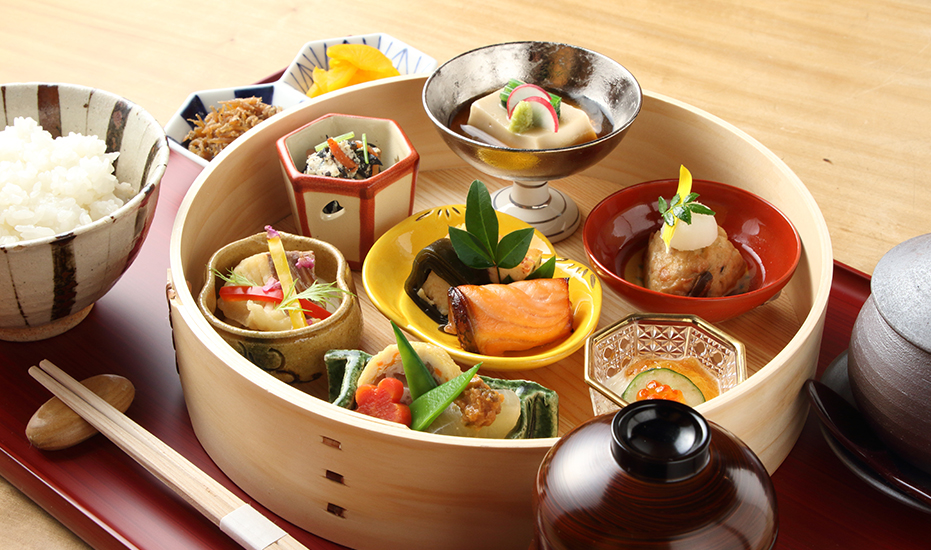
This is a great and affordable place to try Teishoku, or set meals. The courses are generous and a great place to try well prepared seasonal cooking.
Hakuyoan (はくよ庵)
Opening hours: Lunch 11:00-15:00, Dinner 17:00-21:00, Closed on Wednesdays
Address: 4 Chome-18-1 Chitosedori, Toyokawa, Aichi 442-0888
Website (Japanese only) | Google Maps
Where to Stay
To fully immerse yourself in the charm of Gujo Hachiman, consider spending the night at one of the town’s traditional inns.
Hotel Associa Toyohashi
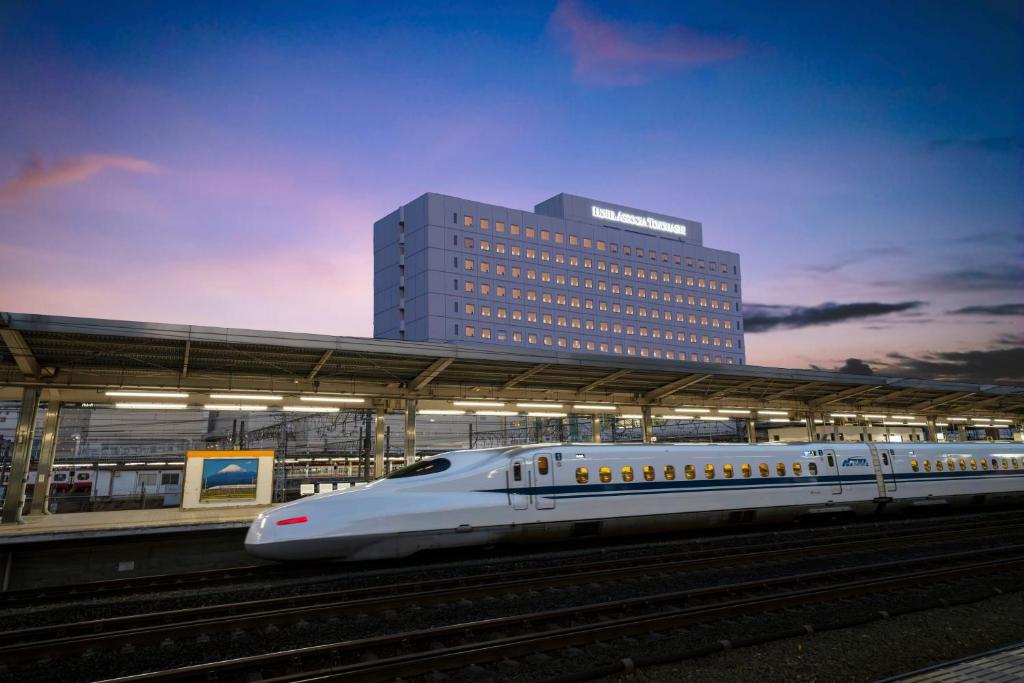
Hotel Associa is located just a few stations away from the heart of Toyokawa in the neighboring town of Toyohashi. This upgraded business hotel is directly connected to Toyohashi Station, meaning it’s just a few minutes walk from the Shinkansen (bullet train) as well as trains connecting to Nagoya Station.
Hotel Associa Toyohashi (ホテルアソシア豊橋)
Address: Nishijuku Hanadacho, Toyohashi, Aichi 440-0075
Website | Google Maps
Travel Tips
Since it is just one stop from Toyokawa Inari Station, it is a nice idea to make a stopover for Toyohashi and visit its many interesting attractions such as Yoshida Castle, Yoshida Park, take a ride on the picturesque tram that crisscrosses the city and get to know one of the Japan’s most spectacular handheld fireworks Tezutsu Hanabi.
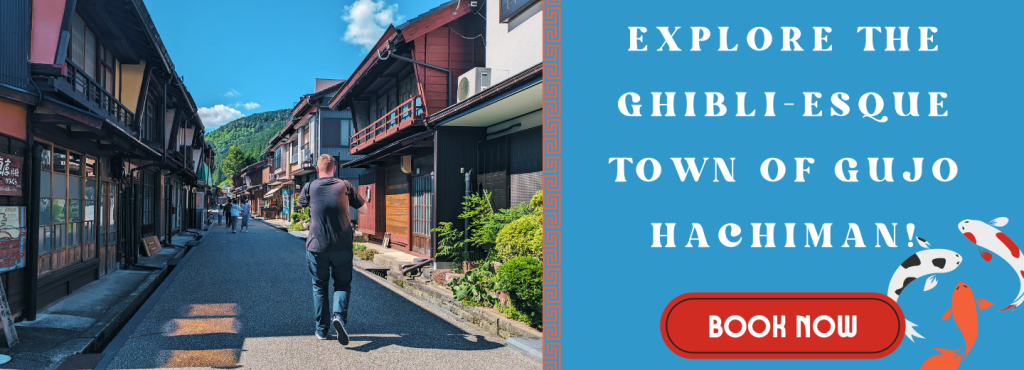
How to Get There
If you are coming from Tokyo station, take the Tokaido-Sanyo Shinkansen (bullet train) , transfer to the Iida line at Toyohashi Station and get off at Toyokawa Station. From there, it’s an eleven-minute walk to Toyokawa Inari.
If you are coming from Nagoya station, take the Meitetsu Nagoya Main line bound for Toyohashi and get off at Toyokawa Inari Station. From there, it’s a five-minute walk to Toyokawa Inari.
Conclusion
Toyokawa is a hidden gem worth visiting for its blend of history, culture, and nature. From the spiritual ambiance of Toyokawa Inari, with its iconic red tori gates and stone foxes, to the tranquil charm of Toyokawa Park during cherry blossom or autumn foliage seasons, the city provides a serene escape from the bustling crowds. Combined with its delicious local cuisine, particularly its renowned eel dishes, Toyokawa presents an authentic and memorable experience for those seeking a deeper connection with Japan’s lesser-known treasures.
Did you enjoy this article?
Make sure to also check out our other posts about Nagoya and its surroundings and trust us if we say Nagoya is not boring!
Be sure to follow us on Facebook for regular updates on Nagoya, and see our Instagram for pictures and stories about the city!
Tag us 📲
Would you like to visit Gero Onsen, or have visited in the past? Let us know in the comments or on social media and tag us with #nagoyaisnotboring

